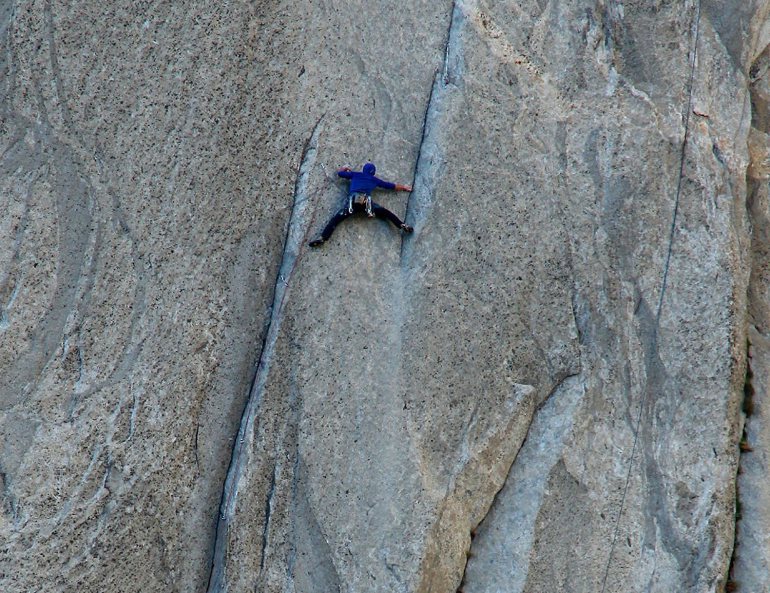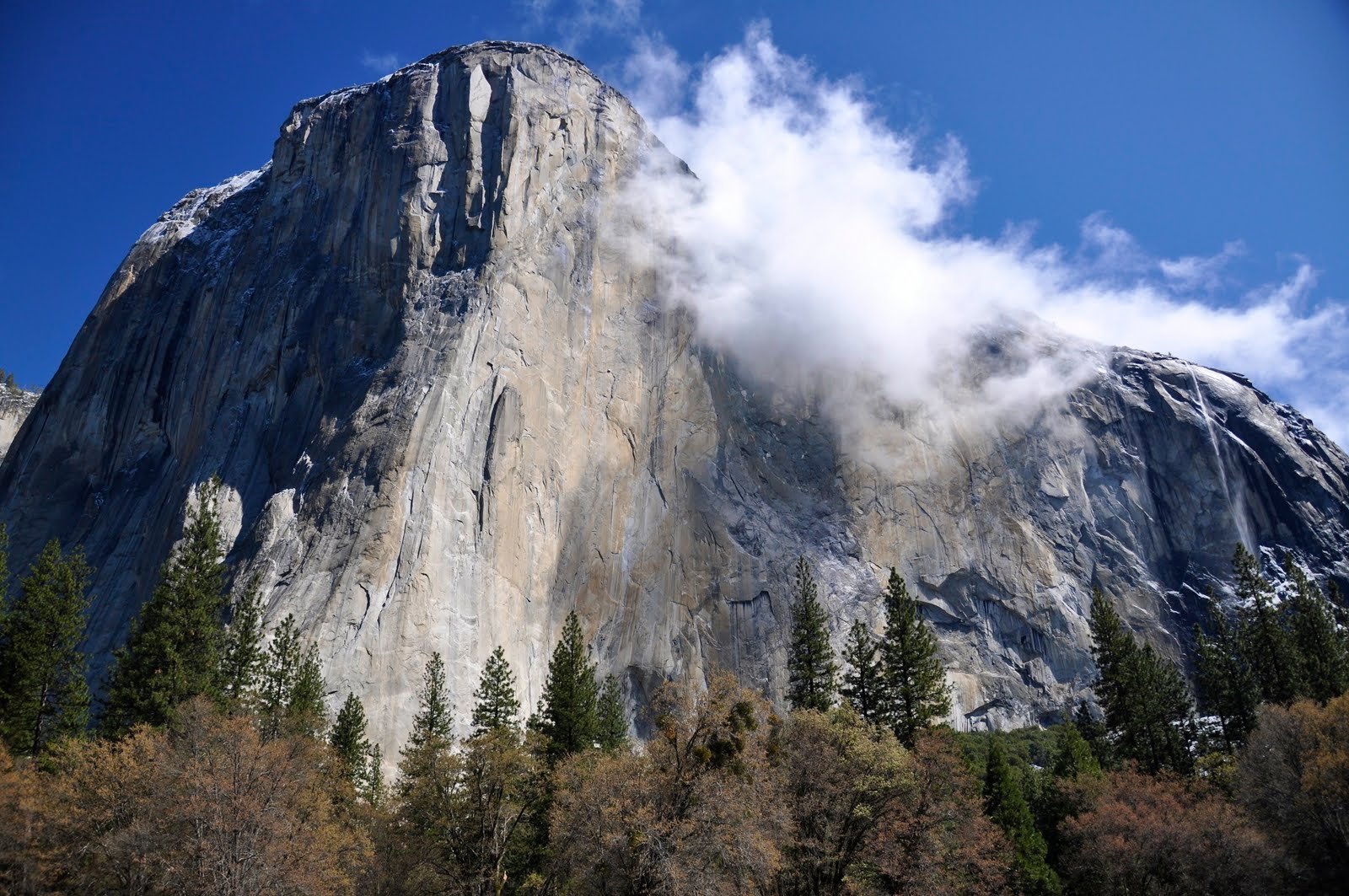You probably have to stand in the meadow and look up at El Capitan to have some sense of how incredible the feat of free climbing the Dawn Wall is. Just staring up at the immense, sheer slab of granite gives you a sense of vertigo, especially when you can see specks of people on its white surface.
 Coming from the flatlands of the American Mid-west, Half Dome and El Capitan in Yosemite Valley leave me gobsmacked every time I set eyes on them. Once, after spending a few nights alone in the Valley during the off-season, I woke one morning feeling the rocks were alive.
Coming from the flatlands of the American Mid-west, Half Dome and El Capitan in Yosemite Valley leave me gobsmacked every time I set eyes on them. Once, after spending a few nights alone in the Valley during the off-season, I woke one morning feeling the rocks were alive.
They are alive of course, geologically speaking. After all, the last glaciation that carved out Yosemite Valley only retreated about 15,000 years ago. More than that however, as any rock climber will tell you, rocks are living things too.
“I hope it inspires people to find their own Dawn Wall,” Kevin Jorgeson said standing on the mantle of ‘El Cap’ on a sunny, cloudless day after what most experts agreed was the most challenging rock climb in the world.
“I think everyone has their own secret Dawn Wall to complete one day, and maybe they can put this project in their own context,” he added.
The free climb of ‘El Cap’s Dawn Wall is a tremendous personal achievement to be sure. But that certainly isn’t why the eyes of the world were on this pair of human primates the last week of their three-week ascent. Reprising our distant past, they far surpassed the strength and dexterity of our ancient ancestors, when proto-humans hunted and scavenged on the ground but climbed and still slept high in the trees.
Jorgeson and Caldwell achieved a feat of daring and muscle only fully modern humans could imagine. One can’t help but feel that their accomplishment is an external manifestation of the human spirit’s capacity to climb the internal El Capitan all human beings now face.
The spiritual climb, as I see it, is like scaling the vertical face of El Capitan, without ropes. Each time you fall, you fall all the way to the bottom of yourself, and have to start again.
The spiritual journey is not something you can train for however. Nor is there any goal as such. Each step is taken without thinking of the next. Indeed, one can only advance if one does not think, but is fully present in the place where one is at present. And like scaling El Capitan, looking down and marveling at how far we’ve come is ruinous.
There is another metaphorical parallel with free climbing El Capitan. To get to the top the pair had to forget the top, and focus completely on each hand and foothold, or they would fall. Even so, fall they still did, many times, sometimes nearly a dozen on a single section, or ‘pitch.’
The difference is that when you fall on the inward climb, you don’t physically die, even when you’re shattered. If you don’t quit, but pick yourself up and start again, you grow stronger, faster and more nimble in dying to the self. It is the quitting that finishes us, not the falls.
At the news conference on the Valley floor, Kevin Jorgeson spoke with tremendous eloquence, echoing the spiritual climb: “Every time you finish a really hard pitch on the Wall, at  least for me, when you would grab that last hold, you could literally feel all the hope and desire and stress just drip off you, and you’re just hanging their, in silence and relief and joy.”
least for me, when you would grab that last hold, you could literally feel all the hope and desire and stress just drip off you, and you’re just hanging their, in silence and relief and joy.”
So what is the Dawn Wall that all human beings now face? And have we always faced it, and why, defying the laws of nature, has it grown into this black granite mountain before and behind our eyes?
Humanity faces an unprecedented and intensifying crisis of consciousness. The fact that the murder of a just a score of people in France has sent Europe and the West into a paroxysm of fear and militaristic reaction is overwhelming evidence of it. Terrorism is just one psychological expression of the human crisis, couched in the atavistic terms and mentality of war.
The wall we all face, on which the sun has yet to dawn, is the division and fragmentation of the world, which exists to one degree or another within everyone. Especially in this hyper-interconnected age, we all share, in microcosm, the consciousness of man that has produced the seemingly insurmountable obstacles to humanity’s future.
What is at issue is nothing less than the imperiled human spirit. Jorgeson and Caldwell physically demonstrated what the human spirit is capable of achieving. The same foresight, grit and determination can and must be applied within.
The challenge before the human being now is internal, not external. Can the psychological revolution that changes the disastrous course of humankind ignite within us at this point in human history?
Political and media elites don’t even understand the question, nor do they want to. It goes against their positions and power and influence. But why have most ordinary people, in the West at least, given up on humanity, which actually means giving up on oneself?
Perhaps it only takes two reaching the top together to show that it can be done. Not that everyone can or should reach the metaphorical mountaintop in this lifetime, or that the breakthrough in human consciousness will occur at this time.
But two young men, in scaling the highest and hardest slap of rock on earth, have just unintentionally attested to the indomitability of the human spirit.
Martin LeFevre

